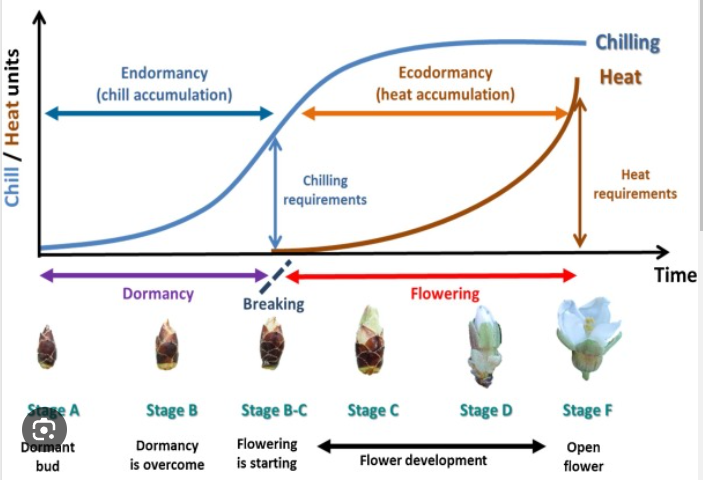Bud break is an exciting time of the year for winemakers. It’s the time where all our hopes and dreams for the vintage come alive. In reality, it is the beginning of the new shoots and leaves , and will become the new growth of the plant; the leaves, the tendrils and of course the grapes.
Bud break is considered a phenological aspect in the growth of the vine. Phenology is defined as “the study of the timing of natural phenomena that take place periodically in plants and animals. (Iland P, Dry P, Proffitt T, Tyerman S. 2011. The grapevine: From the science to the practice of growing vines for wine) Grapevine phenology is extremely dependent on air temperature.
The buds for this vintage actually began their story in the vintage prior. In order for the buds to be formed, the vine must go through something called an endodormancy phase (chilling requirements.) If this cold requirement is not met, delayed bud break or worse, prolonged dormancy can occur. If this happens, it will affect the growth of the vines and impact the overall quality and quantity of the crop.
Have you been missing the weekly Exploring the Wine Glass posts? They have moved. Sign up below to receive notification of new posts. Subscribe to Dracaena Wines’ blog in the sidebar on this page.
As the temperatures warm, the second phase of dormancy begins. This stage is known as ecodormancy. During this time, the plant physically is ready to grow, but the climate has not reached the appropriate conditions to allow it to advance. In order for the vines to break out of ecodormancy, the temperatures must reach an average of 50oF (10oC). This is a very dangerous time for the vine.

Once the vine has entered ecodormancy, it is susceptible to the warmer temperatures. During endodormancy, even if the temperature rises for a period of time, the vine will enter bud break thanks to the naturally occurring hormone, ethylene inside the buds. However, if the vine is in ecodormancy, as the temperature rises, the hormones auxin and gibberellin trigger the vines to wake up and start sending the reserve sugars and water from the roots up to its limbs. This in turn, allows the buds to swell, giving life to the hard nodes.
Bud break can occur at different times depending on the vineyard site, grape variety, and climate. Early bud break can be worrisome due to the fact that Spring can still be susceptible to frost and can damage the newly formed primary buds; destroying the crop for the vintage. Some varieties are capable of producing secondary buds (even tertiary) but these buds are much less productive.
Is there a topic you would like me to cover in a future post? Please leave a comment to let me know.
~Slàinte!
Please follow us on Instagram, Twitter, Facebook and Youtube.
Try the 90+ rated and multiple Double Gold medal winning wines of Dracaena Wines and get a 10% discount off your first order. Click the banner below and use code “Explore” at checkout. 
